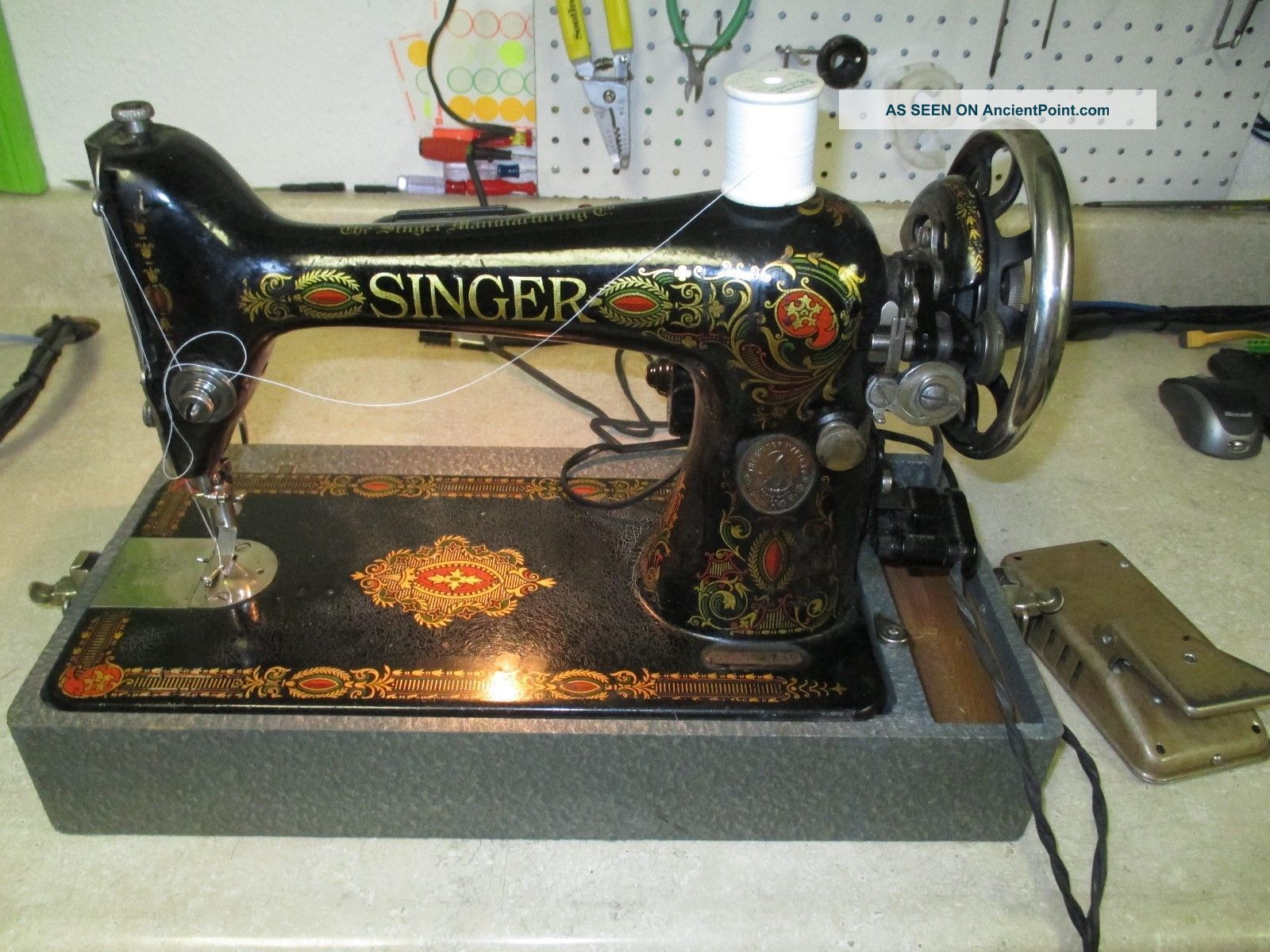


The machine does not provide for a back tack or reverse,the feed dogs do not drop (the 66 never included this feature), and the stitch length is adjusted with a stitch length regulator knob instead of a lever. A side clamp presser foot was introduced on the 66 in 1923. The earlier vintage model 66’s (prior to 1923) have a rear clamp presser foot. When both of these tasks are completed, the end result will be a beautiful sewing machine that runs and sews like new. I also like the “Egyptian scroll” design on the nickel plated parts.

The “Red Eye” decals are in very good condition for their age and I plan to do a detailed original finish cosmetic restoration to accentuate the decals and restore a smooth finish over the original black japanned paint. Despite the fact that the machine runs smooth and sews well, the machine will undergo a complete disassembly and detailed mechanical restoration. I chose this particular model mainly 66 for it’s cosmetic condition. This added simplicity to threading of the machine and the perfection of the stitch it formed.

Ever wonder why they call it a class 66 bobbin? Now you know!ĭifferent from the vertical hook design found in most machines of this vintage (excluding vibrating shuttles), the hook was mounted horizontally allowing the bobbin to be simply dropped into the machine. The 66 introduced a smooth oscillating hook and the class 66 bobbin. Built incredibly tough, a model 66 that is well adjusted and in tune can out sew almost any new or modern sewing machine today… and it can do it through a variety of fabrics from linen and lace to horse blankets. Singer claimed (and many believe) that the Singer model 66 was the first mass produced sewing machine that produced a near perfect stitch. First introduced in America in October of 1902 and produced there until 1956 and was also produced in Scotland as the 66K until 1960. The Singer model 66 is truly one of Singer’s fine iconic sewing machines.


 0 kommentar(er)
0 kommentar(er)
